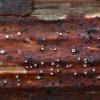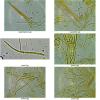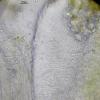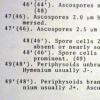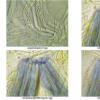
18-12-2025 21:17
Pol DebaenstThe identification took me to Byssonectria deformi

15-12-2025 07:09
 Danny Newman
Danny Newman
indet. Rutstroemiaceae sp. on unk. fallen leavesMc

19-12-2025 10:10
Patrice TANCHAUDBonjour, récolte réalisée en milieu dunaire, a

18-12-2025 17:23
 Bruno Coué
Bruno Coué
Bonjour,je serais heureux d'avoir votre avis sur c

18-12-2025 18:07
Margot en Geert VullingsThese plumes were found on rotten wood.They strong

17-12-2025 18:35
 Michel Hairaud
Michel Hairaud
Bonjour à tous/Hi to everyone I am passing along

15-12-2025 15:48
 Danny Newman
Danny Newman
Melanospora cf. lagenaria on old, rotting, fallen

15-12-2025 15:54
 Johan Boonefaes
Johan Boonefaes
Unknown anamorph found on the ground in coastal sa

15-12-2025 21:11
 Hardware Tony
Hardware Tony
Small clavate hairs, negative croziers and IKI bb
 Bonsoir à tous,
Bonsoir à tous,Suite et bientôt fin de mes récoltes sur renouée du Japon. Ici je pense à Stictis radiata, d'abord parce que les apothécies sont nettement plus petites (max. 0,3 mm de diamètre) que chez Stictis stellata (diamètre parfois dépassant le mm) montré tout récemment sur Fallopia japonica toujours et que d'autre part, les spores sont ici larges de 2-2,5 mu.
Qu'en pensez-vous ?
Bernard


Thanks for your message !
I will try to make a cut of apothecium but I admit that I do not know what are the periphyses. Would you possibly a drawing or a microscopic picture so that I know what I have to observe? I will try to redo pictures spores alive.
Regarding the iodine reaction, I just noticed a very slight blue color and diffuses into the ascus (especially upper half) with lugol but not a color "deep blue" suitable for this species.
Bernard

What is meant with periphysoids (not periphyses, sorry) you can see here.
Sherwoods distinction is perhaps a bit weird, and her opinion about amyloidity may be wrong as she appears not to have understood the influence of KOH and Melzer's.
But I must admit I have no clear concept of thse two species.

A red reaction inside the ascus could be due to glycogen and would then be called dextriniod, but then it should be seen also after KOH, or in Melzer without KOH. What reacts blue after KOH (I think the ascus wall surface) must be red in IKI without KOH (hemiamyloid). See my homepage:
http://invivoveritas.de/articles/iodine-reaction-in-ascomycetes-why-is-lugols-solution-superior-to-melzers-reagent/
Fig. 2 and 5.

